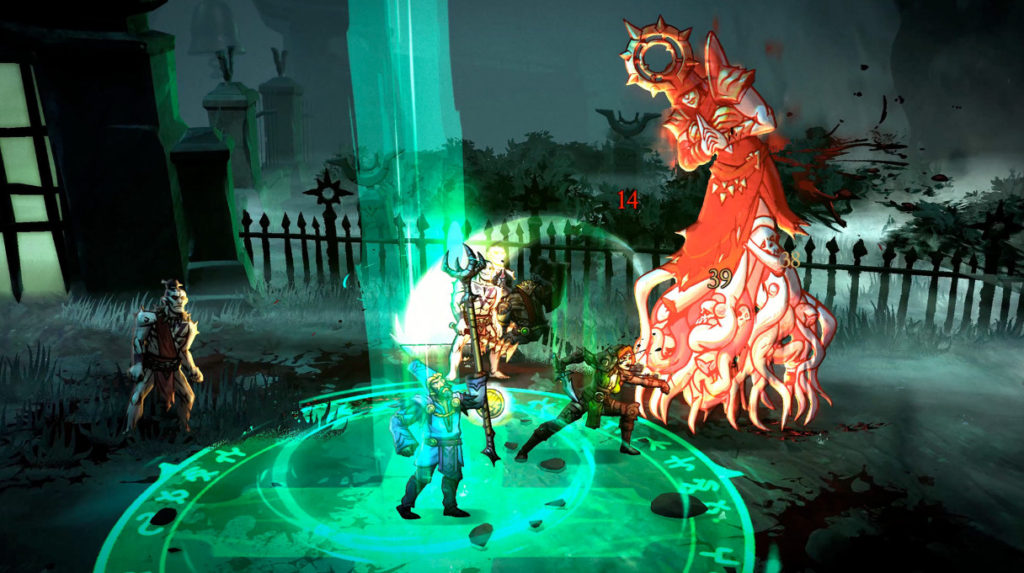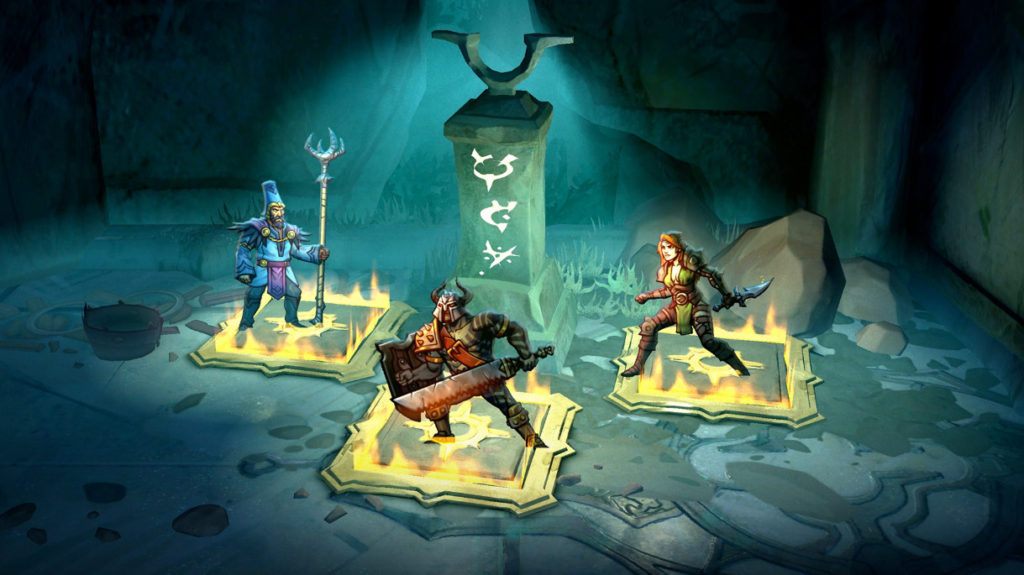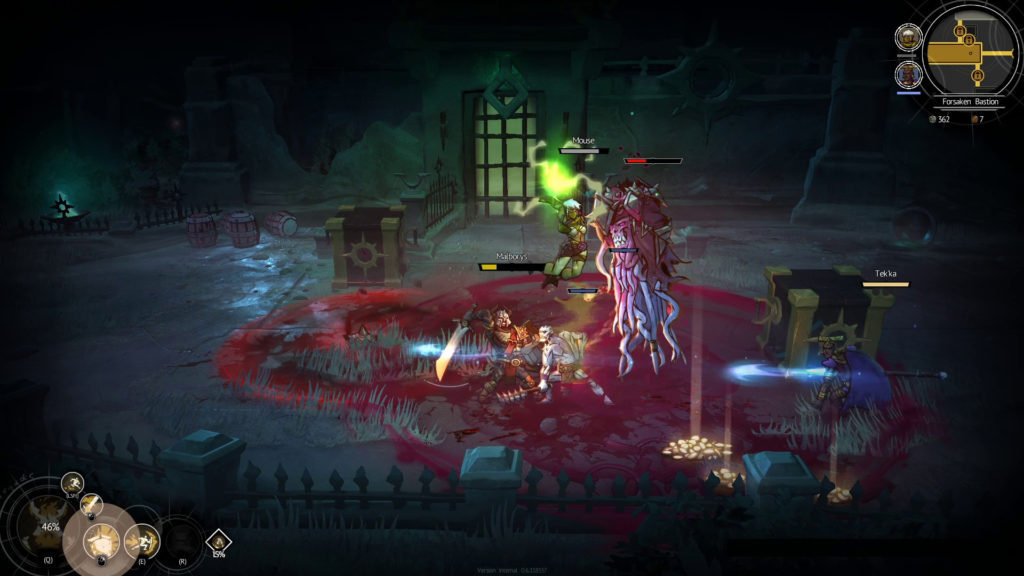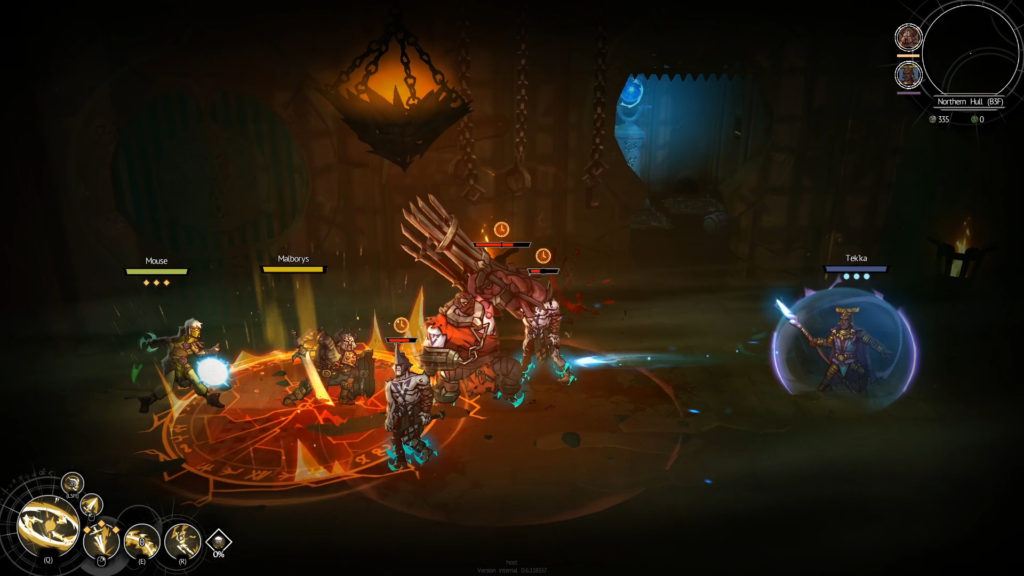We had the opportunity to interview one of the key writers of Blightbound, Roderick Leeuwenhart. Blightbound is not his first literary work found in games; he also worked on another title of Ronimo (Awesomenauts). Next to his writing work and short stories for the games industry, Roderick is known for his novels about Japanese fan culture in the Netherlands (Pindakaas en Sushi). He is currently working on a dystopian sci-fi novel (Sterrenlichaam).
Blightbound was born from a partnership between developer Ronimo Games (Awesomenauts) and their trusty sidekicks Devolver Digital (My Friend Pedro, GRIS). It’s a dark and stylish co-op action RPG that will battle its way onto PC later this year. Roderick has already published eight chapters set in the Blightbound universe at the moment of writing – luckily, he still had some time in his busy schedule to talk to us!
Although I already spoiled a little bit, can you introduce yourself to our readers?
Sure thing! I am a Dutch author primarily known for writing science fiction and novels about Japanese fandom. There’s this Dutch magazine called AniWay that I’ve worked for over twenty years for by now. I’m a big gamer, so it was very pleasing when I finally got a foot in the door and was invited to write for Ronimo. Blightbound is dark fantasy, but science fiction is my main love. It’s the best genre.
Before you started working on the story for Blightbound, you worked on Awesomenauts. Could you give us a tour through the work you did with Ronimo before working on full background lore?
Awesomenauts was already going strong for years before I ever joined the team. My work there was primarily to write dialogue scripts for new characters, or fighters, really, that they were adding to the roster—really zany stuff. I’d get some insane high concept pitch like, “this guy’s an alligator who LOVES guns, he’s a big mean bounty hunter, and he’s part of an A-Team kind of outfit.” And then I had to think of all the jokes we could do with that. There’s so much meme stuff in there, and there was never a point where the team said, “okay, that’s enough; dial it back now.” It was great. The downside is that when they started developing Blightbound, they at first thought I couldn’t write dark fantasy. I had over-meme’d myself. (Fortunately, they learned the error of that assumption, and I didn’t even have to get THAT violent.)
When I first saw the footage and game logo for Blightbound, it reminded me a lot of Gaunlet and Torchlight massed together, with some added elements from other ARPGs in the style of Darkest Dungeon. Could you give us a quick rundown on how the game functions?
Blightbound is a dungeon crawler where you expressly work together in teams of three. The teams are always the same: a warrior, a mage, and a rogue. (Don’t worry though, there are bots if you prefer playing solo.) You can play with friends or strangers just as easily. The idea is that the dungeons are too tricky to handle alone; you really need the synergy between everyone’s abilities and fighting styles.
Contrary to roguelikes, there’s no random generation here. Every area is tailormade to offer a specific experience. Grinding is key to getting stronger; the game scales the challenge and rewards with you as you progress. One of the many cool features is that you can collect heroes, spread across all the types. They each have unique backstories and combinations of skills. Add to that a ton of weapons, including legendary weapons that further adjust certain skills, and you get a looooot of variety and stuff to try out.
Diablo was a big inspiration, so your mention of Torchlight isn’t far off. Visually, Ronimo has always excelled in 2D art styles. This time, we combined that with 3D environments. There’s a certain Mike Mignola/Darkest Dungeons aesthetic to it, but it has enough uniqueness to make it work, I think. And there’s always the Ronimo sense of humor to go with it, so it’s dark but certainly not depressing. There are some pretty flashy characters in there. Roland of Stendhall comes to mind—he’s a fabulous mage with long blonde hair.
Since the story is in your hands, we have high expectations (I also read Sterrenlichaam). How deep is the game development connected to the stories you write? Did you create the characters as well?
Writing a story in the context of a game the size of Blightbound is very different from writing a novel. In the latter case, I sit down and create and develop every part of the story singlehandedly. With something like Blightbound, I get called in at a stage where the game is already fully in development, and there are reams of background ideas and lore documents floating around. It was up to me to streamline all of that and then develop most of the characters. Visually, they had already been designed—which is actually a big help. If I can see a character, fully clothed, with a certain look in their eye, that usually already gives me an idea of what they’re about.
Take, for instance, the clansman Karrogh, who wears a giant wolfskin on his shoulder. From that, it was very logical to assume he had, at one point, as a boy, slain a wolf to protect his village and was now wearing its skin as a trophy. Or Triss was dressed straight out of some dystopian punk future, so there was no question that she and her brother had grown up as orphans, scavenging to survive.
Now, a lot of that story is hidden just below the surface. Blightbound uses small; personal story beats rather than huge cinematic moments. The story is supplementary, and I had to write around that, which made it all the more gratifying when I was asked to write a whole collection of short stories (an anthology worth of them!) as a way of enriching the available lore. Those short stories are a great way to dig into the game’s background secrets and its characters. You can read them for free on the Blightbound site.
Let’s talk gameplay a bit; when I read about the Blight, it reminded me a lot of Dragon Age, while the game itself reminded me a lot of Gauntlet. Can you talk a bit about what inspired Blightbound to become the game it is today?
That’s not something I know exactly. I wasn’t there at the conception of the game. I know that Diablo and other dungeon crawlers were one of the early inspirations. Ronimo is very iterative. They’ll think of a concept and then get a prototype running, and they never stop finetuning and changing it. The game went Early Access last year, and since then, it has been constantly improved and expanded. I think in ways that the initial development team couldn’t have imagined themselves. So it’s a journey of discovery.
And also a great motivation for people who took a peek at the Early Access version to return once the 1.0 launch happens later this year. You’ll be surprised how much has changed—in no small part, thanks to the dedicated community that is always providing feedback on Discord and other channels.
So, let’s talk about the future – Blightbound the Novel? Blightbound as a graphic novel? Anything you can share?
I am always super ambitious with my projects. When I set up the Blightbound short stories, I designed them as a so-called “mosaic novel,” a collection of separate stories that nevertheless tie into each other and weave a greater tale. Like a mosaic. Blightbound is like that. It starts individually, but as the stories progress, readers have hopefully caught on a big thread running through everything. By now, we’re heading for the explosive finale, tying all the plotlines together.
It would be fantastic if I could bundle those stories into a beautiful, printed book. That’ll read so much better than a website—no news yet on whether that’ll happen, though.
And, something we ask everyone we interview – what’s your favorite console and game (apart from your own game, of course)?
From childhood on, I’ve been a PC gamer, but I can’t get around the awesomeness of the Nintendo Switch. It’s such a great system. As for my favorite game on it, that has to be Breath of the Wild. I mean, I have tons of other favorites on all systems, but if we’re talking quality, oh boy. You can’t beat this one.
Anything else you would like to add/let the readers know?
Play Blightbound! And if you dig the setting, read my stories on the website! That’s the biggest compliment you can give a writer—reading their stuff.
We want to thank Roderick Leeuwenhart for doing this interview with us. Be sure to check out Blightbound in the Steam Store (or Rodericks other Books)






